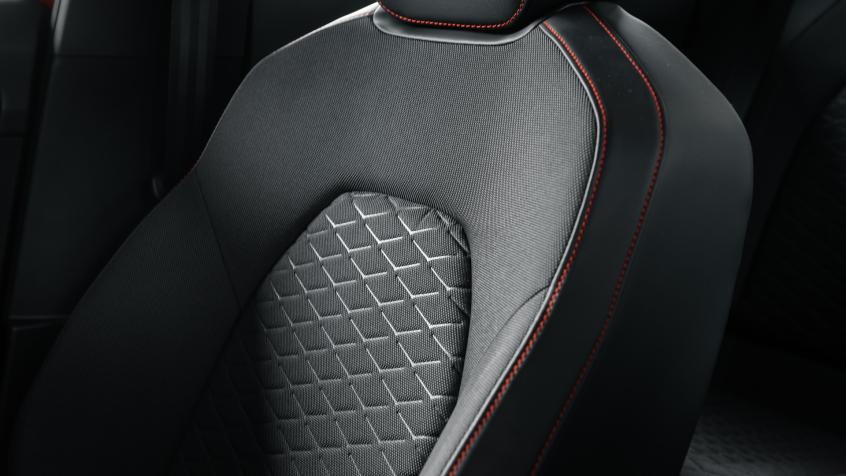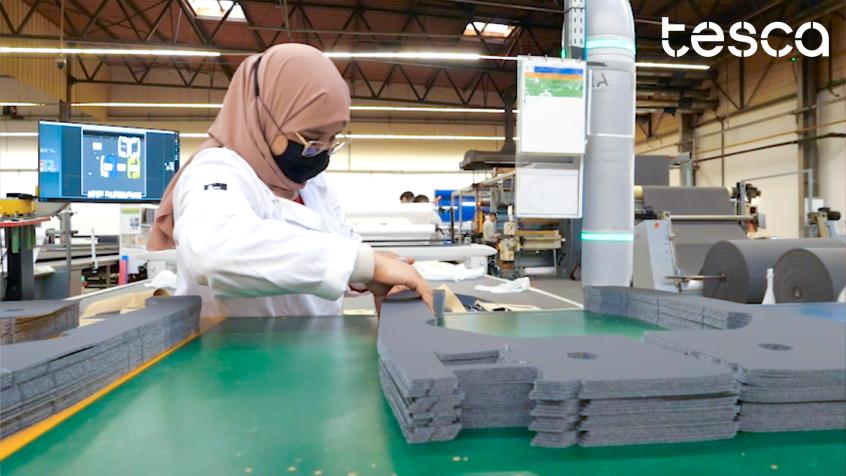Cost reduction in the automotive fabric cutting room: A checklist of best practices
The automotive industry in the COVID-19 context: the heightened importance of reducing operational costs

"Businesses must become more flexible...
...nimble, and prepare for new customer and mobility issues. The global pandemic is forcing these industry heavyweights to step toward change.” - Felipe Munoz, Automotive Analyst at JATO Dynamics, Brinknews.com
The ongoing COVID-19 pandemic has upended the automotive industry and redefined the way companies produce, buy and sell vehicles for good. According to Boston Consulting Group’s automotive team and Center for Macroeconomics, sales will most likely decrease by 14-22% for the Chinese, American, and European markets in 2020 [1]. While some experts say that this crisis might incite more telecommuting and hence a decline in car ownership, others think that new business opportunities might arise because of it [2], such as increased demand for small, affordable, and ‘low maintenance’ cars such as the Citroen Ami [2] for consumers who would feel safer with private transportation.
During this period of uncertainty, what remains clear is that OEM and Tier 1 vehicle interior manufacturers need to focus on becoming more agile and flexible to seize these new business opportunities and satisfy current consumer needs, by producing a wider variety of seat upholstery and covers in different volumes. Achieving operational excellence and reducing operational costs in the cutting room is the way to lay a solid foundation for gaining agility – which entails investing in best-in-class cutting machines, avoiding errors and rework, improving teamwork, and increasing your machine uptime. Furthermore, minimizing costs is the right approach to maintaining profit margins while cash inflows are decreasing, to ensure a shorter payback period for your equipment and reduce the chances of further loss. In order to achieve operational excellence and reduce costs, investing in the right technology and getting adequate expertise to implement these eight best cutting room practices are necessary.
8 best cutting room practices to minimize costs
With the right equipment and expertise, you will be able to implement and further improve these eight best practices:
1. Set your targets and track your progress rigorously with OEE metrics
While OEE (Overall Equipment Effectiveness) is often used as a metric for core production processes, many companies still do not use it as rigorously for cutting rooms. By calculating the machine availability vs. performance vs. quality ratio on a constant basis, they will be able to identify what areas to improve on, especially when cutting is at the heart of the overall process. Companies tend to focus too much on dollar and cents when it comes to cost savings, but they will actually save a lot
more and increase their returns on investment (ROI) by monitoring the cutting process regularly rather than just using financial results as the benchmark. It is important for them to continuously evaluate, set and reestablish their OEE objectives to ensure incremental improvement.
2. Achieve almost zero-buffer cutting
When it comes to cutting, a mere 1 mm reduction in buffer can translate into at least a 1% gain and several hundred thousands of dollars in material savings. For example, if you are using 40 kilometers of fabric per month, you can save up to 400 meters, which adds up to 4,800 meters annually. With an average cost of $27 per meter, a 1% increase in material gain can lead to $128, 800 in cost savings. Well-designed blades and built-in smart maintenance, and management systems and sensors can facilitate zero-buffer cutting and minimize fabric waste. Aside from material savings, having less fabric waste to manage also means that you will have more time to focus on the quality of the cutting jobs themselves, high value-added tasks and upskilling your cutting room personnel. Manufacturers that manage to lower their cost per cut part can also offer more competitive pricing to their business partners and clinch more deals.
3. Reduce scrap and rework in your fabric-cutting processes
There are four main factors of a high scrap rate: low quality raw materials, equipment, poor operating practices, and cumbersome production setup processes [3]. First and foremost, it is important to provide your cutting room personnel with easy-to-use machinery that has high-quality blades to increase precision. Improving the training process via quick wins and a step-by-step method might help your operators gain confidence and ample knowledge to use the machines with ease. Additionally, singling out the operator might not be the right approach – everyone has a role to play. Examining your past failed products together as a team is necessary to improve your current processes. Having a connected dashboard or a platform can help all team members access centralized data and analyze past cutter performances to identify and eliminate roadblocks.
4. Maximize machine uptime
Two of the biggest and most common barriers to productivity are unplanned machine downtime and heavy maintenance needs. Preventive and predictive maintenance are important factors in increasing cutting time, and keeping daily operations safe and productive. You can improve machine availability by using equipment that comes with intelligent built-in monitoring systems that are connected to your vendor’s technical support teams. That way, you can plan regular cycles of checkups and preventive maintenance. Save time and money on repairs by investing in quality, reliability and efficiency: this means having good maintenance kits, long-lasting bristle blocks, and sturdy blades with sharpening bands on hand. With high quality consumables, you can reduce replacement costs as well. Having a connected dashboard that provides cutting room personnel with the needed visibility to monitor ongoing cutting jobs helps in terms of predictive maintenance.

5. Shorten your lead times by producing more with high-ply cutting
High-ply cutting is a way to reduce operating costs by allowing manufacturers to cut a higher number of plies in one go instead of having to cut the same fabric type multiple times. For example, cutting up to 9 plies of 10 mm Alpahrd fabric, 12 plies of 5 mm Alpahrd PVC or 10 plies of 8 mm Slab Urethane can help you achieve an optimal level of productivity.
However, this can be tricky, as you also need ensure cutting quality by having the right equipment that can facilitate both high-ply and near-to-zero buffer cutting.
6. Achieve optimal cutting quality for complex fabric types
Manufacturers need to be able to handle more fabric types as automotive companies will be trying to offer their consumers a wider product variety and personalization. Investing in machines that have the functionalities that can help them overcome different fabric challenges without losing any productivity (which is, money and time) is essential. For example, managing materials such as woven foam, foam-backed vinyl, and Alcantara requires a great deal of attention. Cutting room operators should be able to control their blades effectively with a software so that they can cut more intricate shapes and patterns for their seats. Having the ability to cut a higher ply thickness with accuracy and precision can also be advantageous, especially when it comes to complex fabrics.
7. Harness the full potential of your equipment for each seating program
With increasing consumer demand for more product choices, manufacturers have to be agile and flexible enough to handle different types of orders at the same time. Having cutting equipment with advanced parameters can help you increase cutting speed and the total number of plies cut without compromising production quality, so that you can optimize your machine settings uniquely for each seating program. Gaining agility and improving incrementally will help reduce costs, and increase production flexibility, agility and speed.
8. Investing in connected and Industry 4.0-compliant machinery for the future
More and more consumers are demanding customized and personalized seating and interiors nowadays and automation plays a big role in accelerating the production process for such orders. Forward-thinking manufacturers are digitizing their plants by investing in Industry 4.0 technology such as cloud-based analytics to get a better overview of each production stage, allowing them to continuously improve their processes. That way, they can establish KPIs, identify areas of improvement quickly and improve collaboration to increase agility and production speed. This allows them to switch between producing bigger and smaller volumes, especially when it comes to mass-produced and personalized items. Additionally, Industry 4.0-enabled processes will allow these manufacturers to increase material savings and minimize production costs through operational excellence.
By implementing these eight bes with the help of Industry 4.0-compliant cutting equipment, vehicle interior manufacturers will be able to maximize their return on investment and shorten their payback period. In turn, they can offer prices that are more attractive to their customers and compete even in the most challenging times.
Discover the brochure
Related Content







